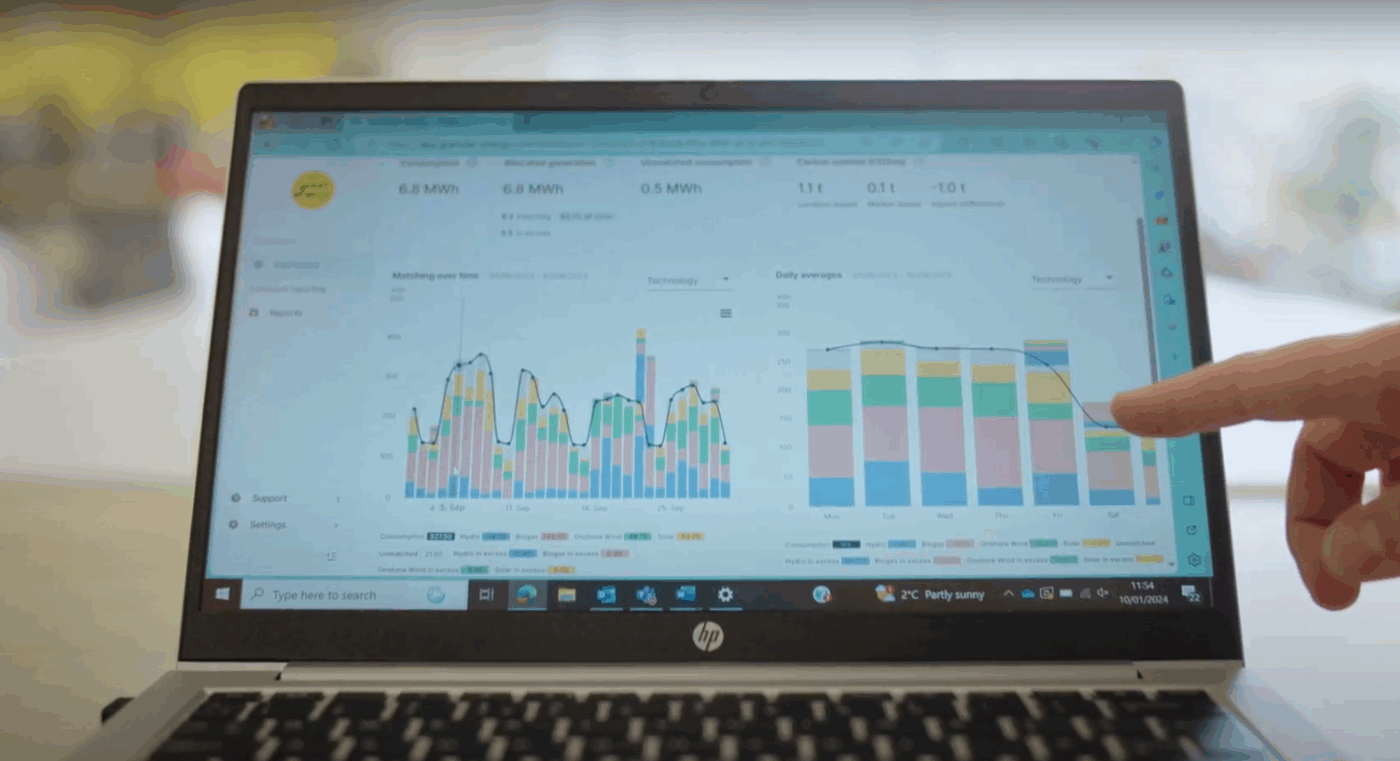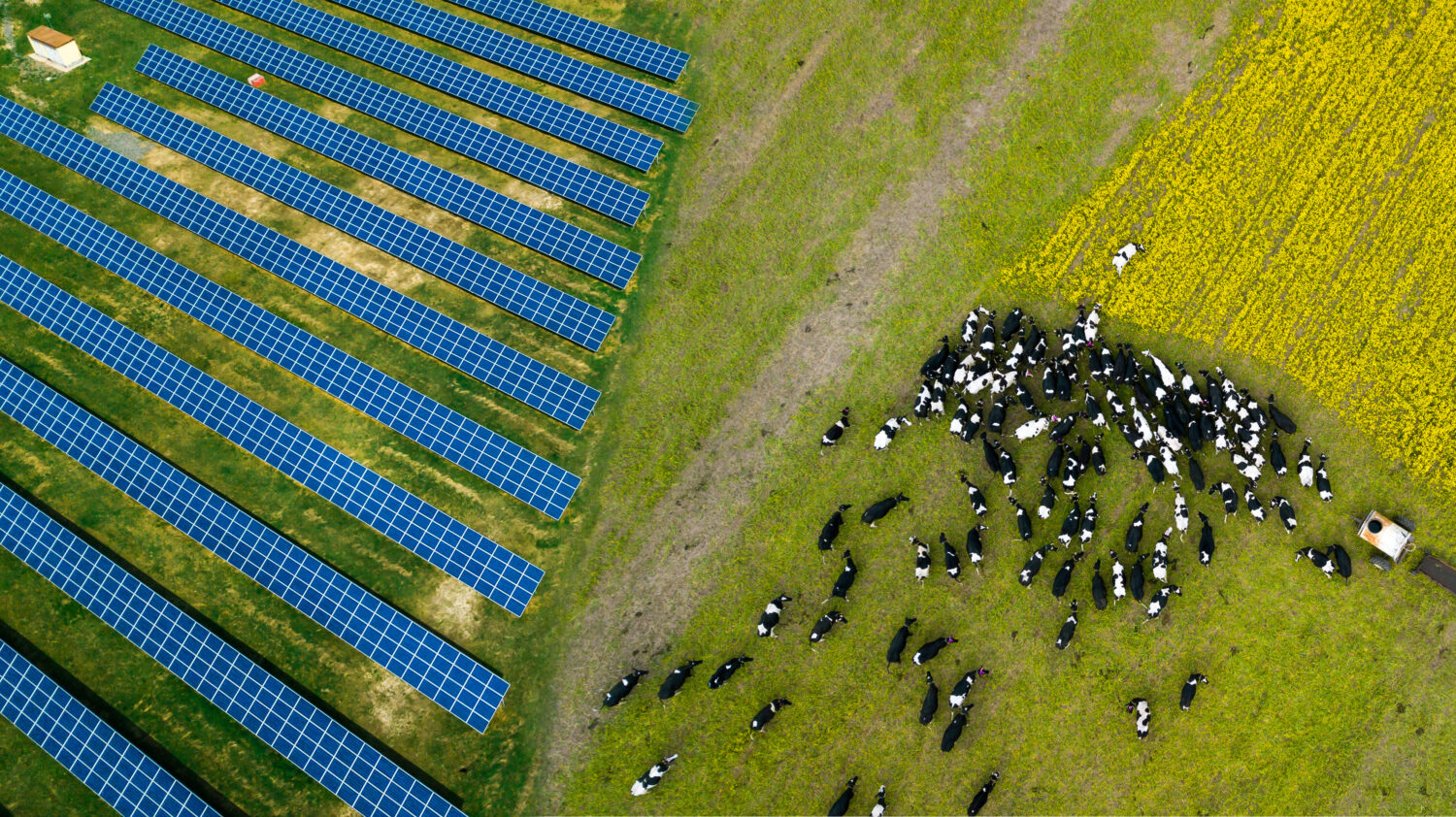
How to use AI sustainably: a practical guide for greener tech
Artificial intelligence software like Chat GPT requires massive data centres to meet increasing demands. In fact, it is predicted that the Information and Communications Technology sector will account for a staggering 14% of global emissions by 2040. And with more and more ordinary people using this breakthrough tech every day, the question of how to use AI sustainably becomes ever more pressing (and often controversial).
In this article, we explore the practical uses of AI in the energy sector, considering if tools like Chat GPT are a friend or foe to net zero targets, and offer practical steps on how to use AI for good.
Is AI bad for the environment?
Energy-intensive training of widely adopted AI models, especially large language models (like Chat GPT), are only possible thanks to large data centres. Not only are data centres expected to use twice as much energy by 2030, they create a lot of heat which requires cooling in order to run. That means a lot of water is consumed in the use of AI. Additionally, the wires and other components involved in building AI infrastructure are made from critical minerals and rare elements which are often mined unsustainably.
When you consider other factors such as electronic waste contaminating soil and water supplies, and energy taken from the grid (to name a few), it becomes increasingly easy to make the case that AI is a net-loss when it comes to the health of our planet.

So, we know AI takes an enormous amount of energy, but is that energy wasted?
What Are the Benefits of AI for the Environment?
By detecting patterns in data algorithmically, AI is fantastic at spotting similarities and differences, helping us predict outcomes with more accuracy. One exciting use is in climate modelling, where ‘deep learning’ AI models are combined with physics-based data, creating accurate, complex simulations that can project 100 years of climate patterns in just 25 hours. Before this, supercomputers would take weeks to produce the same results, which often limited the scope of what could be studied and for how long. What’s more, older technologies are far more computationally expensive, reducing the energy usage and environmental impact of climate science.

And, when we take a step back, there are many more instances where AI creates a carbon footprint which is actually smaller than what it would have been historically. For instance, it can be argued that printed maps (while you might prefer one on a desert island) require more water, energy, and resources involved in the printing and shipping process, than an electronic one.
AI has been a transformative tool, fuelling innovation, creative breakthroughs, and efficiency at scale. And its utilisation in the renewable sector has already improved how energy systems are managed, accelerating cheaper, more accessible, low-carbon energy.
How AI is being used in the renewable sector already
In wind energy alone, AI algorithms have improved turbine efficiency by adjusting blade angles based on real-time data – something human operators simply couldn’t do fast enough. Additionally, hourly matching can use AI, making sure the energy we use is coming from clean sources – exactly when we use it. AI also enables smart usage tracking, giving people and businesses clearer insights into when and where they use the most energy, and how to cut waste.
By better matching demand to renewable energy on an hour-to-hour basis, AI has actually reduced our reliance on fossil fuels in many ways. And with AI further managing things like battery storage, energy distribution, and even predictive maintenance, we’re seeing fewer breakdowns, less waste, and better use of every watt generated.

So, used thoughtfully, AI can be more than just energy-hungry – it can be a powerful tool for accelerating the transition to a cleaner, smarter, and more efficient energy system.
How the UK is preparing for the energy demands of AI
Last week, the UK government launched a new AI Energy Council to make sure our energy infrastructure can handle the demands of AI in a sustainable way. By identifying areas with the potential to deliver reliable large-scale energy, they aim to ensure that innovation doesn’t come at the cost of the planet, linking the grid with renewable energy (rather than fossil fuel stations) more efficiently than ever before. That means utilising wind, solar, and other low-carbon energy sources to scale AI responsibly.

This proactive approach to tech advancements is not just sensible – it’s vital to avoid overloading the grid in the future. And, for mission-led brands in the clean energy space, the council marks an exciting opportunity to help shape how that growth happens.
How to use AI sustainably
You don’t have to be a developer or data scientist to use AI more sustainably. Here’s 3 guidelines you can use to be more mindful of your AI usage:
1. Be mindful
To avoid becoming overly reliant on AI, increasing your carbon footprint unnecessarily, ask yourself: is this the best tool for the job? Often, a quick Google search – run on renewables – would suffice. Also, ask yourself: is this worth it? Generating endless content just for fun (like fake recipes, poems, or jokes) might be entertaining, but it also adds unnecessary load to the system.
2. Improve your prompts
Every query to an AI model requires server power, so avoid long chains of trial-and-error prompts when possible. Plus, by being clear and intentional, you’ll find yourself less frustrated whilst getting better answers.
Here’s a Harvard University guide on the most effective AI prompts +
3. Use lower-impact models
Some models like Google Cloud have explicit environmental aims and transparent reporting, pursuing net-zero emissions across their operations and supply chain by 2023. And Chat GPT’s little sibling, GPT-4o mini, is designed to be significantly more efficient than its predecessors, perfect for smaller tasks and better for the environment.
Final Thoughts: Designing AI for a Greener Future
Using AI sustainably means more than just cutting its energy use – it’s about designing, deploying, and scaling these tools in a way that actively supports environmental goals. That starts with powering AI using clean, renewable energy wherever possible, applying AI to solve real-world sustainability challenges, and embedding climate-conscious thinking into how we build and use AI.